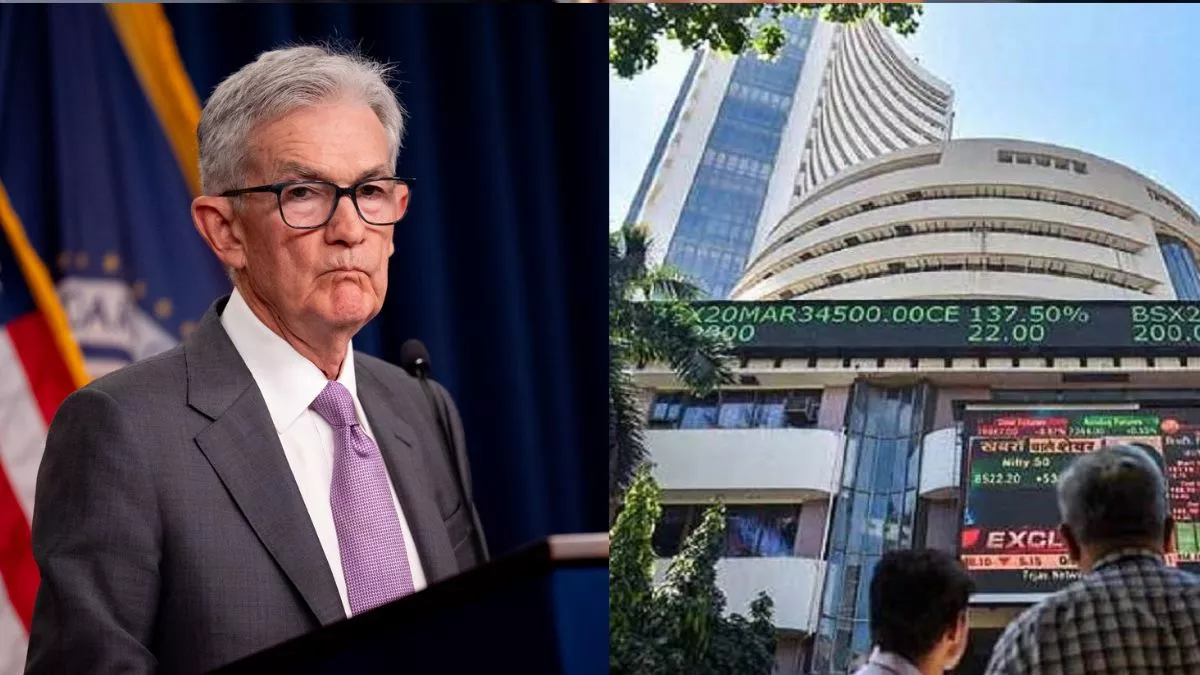
The US Federal Reserve’s interest rate cut by 25 basis points in September 2025 has led to a robust rally in Indian equities. With the federal funds rate falling to 4.00–4.25 percent now, the action marks a move towards easing of monies, increasing investor confidence across world equities. For investors in India, the move has infused fresh hope, pulled up benchmark indices, and paved the way for new foreign inflows.
The Nifty 50 rose above 25,300 and the BSE Sensex appreciated more than 450 points, supported by solid outing in banking, automobile, and IT stocks. The upsurge is indicative of a wider change in sentiment, as investors reset expectations in the face of more favorable global liquidity and a weaker US dollar.
Why the US Fed Rate Cut Matters to Indian Markets
The Fed rate cut is a major macro driver for emerging markets such as India. A decline in US interest rates lessens the yield differential between US and Indian assets, making Indian shares more appealing to FIIs. This will lead to increased FII inflows, pushing domestic market liquidity and prices upward.
A dovish Fed also weakens the US dollar, which favors emerging market currencies like the Indian rupee. This can lower import expenses, enhance trade balances, and also aid corporate earnings—particularly for industries such as oil and gas, auto, and FMCG.
The Fed move is against the backdrop of tentative signs of a slowing US jobs market and persistent inflation fears. The rate cut is intended to provide support to growth but also indicates concern regarding a slowdown. For Indian markets, this means opportunity as well as volatility.
Sector-Wise Impact: Who’s Leading the Rally
Banking and Financials
Public sector banks and private financiers witnessed good buying interest. Soft global rates enhance credit demand and lower funding costs, thereby increasing net interest margins. Shares such as SBI, HDFC Bank, and ICICI Bank are among the winners.
Auto and Consumer Discretionary
Lower costs of borrowing and festive demand have fueled auto shares. Tata Motors, Maruti Suzuki, and Mahindra & Mahindra are likely to gain from enhanced vehicle financing and consumer sentiment.
IT and Tech
Infosys, HCL Tech, and Tech Mahindra spearheaded the rally in IT. Though a weaker dollar could affect margins, overall global sentiment improvement aids deal flows and client expenditure.
Infrastructure and Defense
Defense and infra stocks rallied on hopes of higher government spending and foreign investment. A declining dollar and improved risk appetite abroad could lead to more capital inflows into long-term ventures.
Foreign Institutional Investors Make a Comeback
FIIs have emerged net purchasers after selling for months, investing fresh money into Indian equities. The narrowing of the yield differential and India’s solid macro indicators render domestic assets relatively more inviting. The Fed’s hint of further rate cuts has added credence to emerging markets.
India’s GDP growth is still strong, inflation is in the RBI target bracket, and corporate earnings are recovering. All this makes India a sought-after destination for foreign investors in a low-yield environment.
Domestic Sentiment and Retail Participation
Retail investors are still optimistic about equities. Opening of demat accounts is at a record high, while mutual fund inflows remain steady. Systematic Investment Plans (SIPs) are posting steady contributions, reflecting growing confidence in long-term investing.
The Fed’s rate cut has added to the optimism, encouraging more retail investors to increase exposure to equity markets. With the domestic market consumption strengthening and the prospects of earnings improving, the sentiment remains upbeat.
RBI Next Step: Will India Follow the Rate Cut?
The Fed rate cut has set off speculation on what RBI will do next. Although the RBI has been defensive on inflation grounds, the global trend towards accommodative policy may sway its next move.
Economists anticipate the RBI to take a cut in rates in the second half of the year, if inflation is contained and growth momentum falters. Cutting repo rates would further encourage credit growth and consumption.
But the RBI will probably stick to being data-driven, weighing growth support against inflation management. Any easing move would be gradual and calibrated.
Risks to Watch
Even with the rally, investors must be careful. Global growth remains uncertain and pressure on inflation continues. The Fed’s rate cut is partly a response to these concerns, and further sliding of economic indicators has the potential to influence sentiment.
Geopolitical tensions, currency volatility, and commodity price fluctuations are other risks. Investors need to have a diversified portfolio and emphasize quality stocks with solid fundamentals.
Corporate profits will be a primary determinant of direction for the market. Areas that have strong demand and earnings visibility will tend to outperform, whereas overbought stocks can expect to come under pressure.
Conclusion: A Bullish Setup with Caution
US Fed’s rate cut has set up a bullish scenario for Indian stock markets. With better global liquidity, a softer dollar, and increased foreign interest, the stage is set for a possible rally on all fronts. Banking, auto, infrastructure, and consumer discretionary stocks are poised to benefit.
But the investor should remain realistic and not chase short-term returns. The macro environment is favorable, but risks lurk around the corner. For the long-term investor, this phase presents a chance to build quality stocks and be a part of India’s growth journey.
As the international monetary cycle turns, India has much to gain from its economic strength, policy stability, and demographic boon. The rate cut by the Fed might be the trigger, but it’s India’s fundamentals that will support consistent market performance.


Leave a Reply